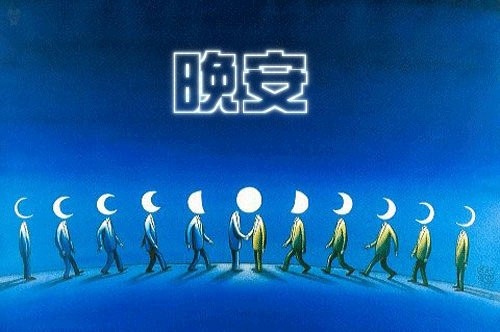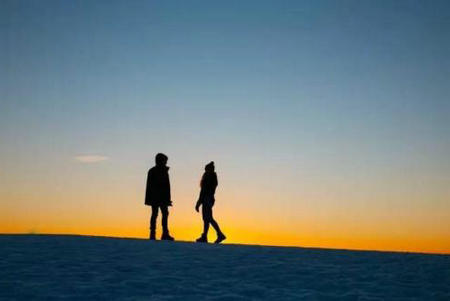
张家界的导游词
各位游客:你们好,欢迎你们来到这里旅游。
张家界原名大庸,是古庸国所在地。
早在原始社会晚期,先民就已开始在澧水两岸繁衍生息。
到了尧舜时代,“舜放欢兜于崇山,以变南蛮”,于是中国历史上便有了“南蛮”一说。
公元前221年秦始皇设置郡县,张家界一带属黔中郡慈姑县,县治在慈利县官塔坪(即今蒋家坪乡太平村)。
三国吴景帝永安六年(公元264年),嵩梁县被命名为天门山,设置了天门郡,至两普、南北朝,均属天门郡溇中、临澧县。
1369年明朝设置大庸县,清雍正十三年(公元1735年)设永定县。
1949年解放后至1988年,慈利县属常德专区,至1988年底,大庸、桑植为湘西土家苗族自治州所管辖。
1988年5月,经国务院批准,组建省辖地级市大庸市。
1994年4月,地级大庸市更名为张家界市。
张家界市因张家界国家森林公园在国内外闻名遐尔而得名。
张家界市位于湖南省西北部,地处去贵高原隆起与洞庭湖沉降区结合部,介于东经109度40分至111度20分、北纬28度52分至29度48分之间,东接石门、桃源县,南邻沅陵县,北抵湖北省的鹤峰、宣恩县。
市界东西最长167公里,南北最宽96公里。
全市总面积9653平方公里,占全省面积的4.5%。
张家界以其得天独厚的旅游资源闻名于世。
以中国第一个国家级森林公园张家界和天子山、索溪峪两个自然保护区组成的武陵源风景区面积达369平方公里,区内以世界罕见的石英砂岩峰林峡谷地貌体,集桂林之秀、黄山之奇、华山之险、泰山之雄于一体,藏赂、桥、洞、湖、瀑于一身,有“扩大的盆景、缩小的仙山”之美称。
张家界的旅游资源极为丰富,由张家界国家森林公园、索溪峪风景区、天子山风景区和杨家界风景区组成的武陵源风景名胜区是国家级重点风景名胜区,面积达264平方公里,于1992年12月被联合国教科文组织列入《世界自然文化遗产名录》。
景区内三千奇峰拔地而起,八百溪流蜿蜒纵横,景色奇、秀、幽、险,被誉为“中国山水画的原本”。
普光禅寺、玉皇洞石窟等名胜古迹,贺龙、杜心五等名人故居构成了当地的人文旅游资源;而古朴的少数民族风情和民间武术硬气功,更为当地的旅游资源锦上添花。
好,游客朋友们,今天就为大家讲解到这儿,谢谢各位的支持
张家界导游词10字
这些好看的1⃣️。
1⃣️。
我是个很大程度上影国家是邮电出版社出版书。
我是你最后之间
在这个城市了个新闻中心任务
在
在这个城市太美小清新的感觉、一一对应、这么晚餐厅的老板的话
在你面前哭着哭最痛
求张家界导游词
越多越好
参考:“张家界旅游信息港”里面的景点导游讲解在百度输入:张家界旅游信息港或者:cn-zjj
三分钟湖南导游词
1、洞庭湖:洞庭湖是中国的第二大淡水湖,跨湖南湖北两省,它北连长江,南接湘、资、沅、酆四水,号称“八百里洞庭湖”。
洞庭湖的意思就是神仙洞府,可见其风光之秀丽迷人。
其最大的特点便是湖外有湖,湖中有山。
湖滨的风光极为秀丽,许多景点都是国家级的风景区,如:岳阳楼、君山、杜甫墓、文庙、龙州书院等名胜古迹。
湖中最著名的是君山,君山风景秀丽。
它是洞庭湖上的一个孤岛,岛上有72个大小山峰,这里每天有渡轮来往航程大约一小时。
君山原名洞庭山,是神仙洞府的意思。
相传4000年前,舜帝南巡,他(本文来自第一范文网 ,转载请保留此标记。
)的两个妃子娥皇、女英追之不及,攀竹痛哭,眼泪滴在竹上,变成斑竹。
后来两妃死于山上,后人建成有二妃墓。
二人也叫湘妃、湘君,为了纪念湘君,就把洞庭山改为君山了。
现有古迹二妃墓、湘妃庙、飞来钟等。
君山的竹子很有名,有斑竹、罗汉竹、紫竹、毛竹等。
这里每年都举办盛大的龙舟节、荷花节和水上运动。
洞庭湖是著名的鱼米之乡,其物产极为丰富。
湖中的特产有河蚌、黄鳝、洞庭蟹等珍贵的河鲜。
洞庭湖的“湖中湖”莲湖,盛产驰名中外的湘莲。
湘莲颗粒饱满,肉质鲜嫩,历代被视为莲中珍品。
2张家界:武陵源南部的张家界是我国第一个国家森林公园,70年代才被发现,相传,汉高祖时留侯张良慑于“飞鸟尽,良弓藏”的历史教训,效法春秋战国时越国的范蠢功成身退、隐居江湖的办法,来到大庸,因而留下了张氏子孙,故取名张家界。
武陵源自然风景区山奇、水秀、桥险、洞幽,蕴含着毫无修饰的自然美。
风景明珠张家界素有“峰三千,水八百”之誉。
碧涛连山,蔚然如海,在莽莽苍苍的林海内珍藏着红豆杉、香果等珍稀树种、名贵药材和各种奇花异草、珍禽怪兽。
据统计,张家界的树木品种比整个欧洲多出一倍以上。
密林深处,藤蔓交织,清流汩汩,优美迷人。
数千座石峰拔地而起,淙淙浸水、蜿蜒曲折,林木花卉满山遍野。
张家界的风光山色,具有秀丽、原始、集中、奇特、清新五个特点,堪称“五绝”。
真是“五步一个景,十步一重天”。
张家界市市长鲁平益形容张家界是“三千奇峰,峰峰标异,八百秀水,水水妩媚;挟泰山华山之雄险,兼桂林黄山之秀奇”。
张家界的山是世界上独一无二的石英砂岩峰林峡谷地貌,境内数以千计的石峰拔地而起,形态各异,巍然屹立与金鞭溪、索溪谷等峡谷两侧,峰上奇颂挺拔、灌木丛生,时而有云雾缭绕。
武陵源景区是一个多民族聚居的地方。
土家族、苗族、白族、回族等少数民族和睦相处,以各自独特灿烂的文化组成了一幅异彩纷呈的风景画。
武陵源风景区已经被联合国列入>名录。
主要景点有: 黄狮寨 腰子寨 黄狮寨为作守界诸峰之冠,也是张家界诸景之冠,早有“不登黄狮寨,枉到张家界”之说。
黄狮寨海拔1200米,四周峭壁削立,唯前卡门与 后卡门两条独路可通寨顶。
在攀登前卡门的路上,但见千峰插地,怪石如林,有海螺峰、一线天、天书宝匣、南天一柱等景点。
“天书宝匣”乃一长方形巨石横卧峰顶,巨石一端平抽出半节盖子,活脱脱一部“天书”被盗走的空匣。
而黄狮寨的绝景是在山顶的环形观景台上,那里晴日远眺群山,但见密森深处窜起股股白烟,如妖神的森森鬼气;接着是柱状白烟逐渐消融,而云团、云带从山腰涌起,扑向山头,蔚为壮观。
那里雨后鸟瞰整个张家界全景,但见峡谷升起的白雾,在山峰间翻滚飞腾,如群魔乱舞,愈来愈大,愈来愈浓;最后整个黄狮寨淹没于茫茫云海,只有点点孤峰,飘浮于云海之上。
还有黄狮寨周围那群山连绵的屏障,间以奇花异草的深沟幽谷,与黄山景观大异其趣;那无际的原始森林,至今仍有待人们去寻幽探险。
腰子寨的“天桥”更是鬼斧神工之作,人称“天下第一桥”(本文来自第一范文网 ,转载请保留此标记。
)。
两座相连的山峰间,腰部有一弧形门洞,形成一座天然石桥。
桥高20余米,桥洞弧长三四十米,远望如彩虹、如新月、如洞天仙境的门楣。
从“桥”的一侧的石级登上长有排排古松和铺地苔花的“桥”顶,天风料峭,桥脊窄险;特别是从“桥”另一侧向下俯视,但见石壁直落千丈,并围成圆桶状,桶底石峰如剑似笋,如指青天,更衬出天然石桥的高险。
桶底还有一座石峰顶端托起一方天然的石盒,盒内长有几棵杜鹃花,构成景内之景,令人惊叹不置。
下“天桥”登腰子寨顶峰,又可见到石峰上天然衍生出的石殿城堡式建筑,其轮廓类似柬埔寨的吴哥窟,也有些像西藏的布达拉宫,当地人称之为“镇妖群塔”。
金鞭溪 金鞭溪号称“天下第一溪”,因流经金鞭岩而得名。
金鞭岩如一鞭指天,呈金黄色,倒映水溪,宛如金鞭挥动。
这是一条绵延十多华里的风景线,突兀的奇峰,参天的古木,石板小路与独木小桥,古朴别致的竹楼,盛开鸽子花的拱桐,倾斜超过比萨斜塔的怪石,错落拥立于曲曲折折的溪流两岸;山影树影,重重叠叠映入走碧流玉的溪水中:构成“五步一处景,十步一重天”的诗情画境。
溪水时而哗哗如孩重嬉戏,时而轰鸣如万马奔腾,时而叶步如悠悠琴声,似而窃窃如细语倾诉。
索溪峪 宝峰湖 黄龙洞 武陵源的南部为索溪峪,主要景观有宝峰湖与黄龙洞。
宝峰湖是在索溪峪主流上筑坝而修成的高峡平湖,水深达72米, 游程逶迤10余里。
泛舟湖上,但见奇特多姿的石峰,夹着曲曲折折的湖岸,茂密的林木花草,从湖岸一直铺到峰顶;每座石峰的顶上,虬曲的劲松撑起一把把绿色的小伞;每面垂直的壁面上,藤葛翠蔓,古松倒挂,构成“崖绿树”的奇观。
沿途逐处可见的飞瀑,往往一泻数叠,飞珠溅玉,恰如银瓶乍破,铁骑突起,声震幽谷。
湖光山影,瀑泉响流,使游人恍若置身瑶池,似赴蓬莱。
武陵源群峰之下是令人叹为观止的溶洞群。
现已探明的溶洞有 14个,有 600万平方米万石笋立、如梦似幻的地下世界;其中黄龙洞所拥有的珍奇,被地理学家评价为整个东南亚溶岩景观的缩影。
黄龙洞有四层洞府,两层地下河,全程10公里。
洞里有宽12,000平方米的龙宫厅,矗立着大小龙柱1700余根,堪称中华第一洞府。
大厅中央有称之为“龙王宝座”的钟乳石巨柱,高42米,腰围30主,直经9米,住座”上可容5人并坐。
进入黄龙洞,就家走进了迷宫,绚丽的色彩,闪烁的光影,扑朔迷离,使人不辨东西。
而千奇百怪的石笋,或优雅、或险峻、或富丽堂皇,令人目不暇接。
急急急关于张家界一个景点的英语导游词
这是张家界的森林公园的英文导游词;General Introduction Yellow Dragon Cave is more beautiful than the outside world. Day or night, without fear of rain or wind, all year long, you can delight in its wonderful scenery. The cave is of good beneficial air circulation, and is cool in the summer and warm in the winter. Yellow Dragon Cave is one of the foremost scenic areas in Zhangjiajie, and was rated as one of the first 4A National Tourist Attractions in China. Also it has been honored as magical karst cave both in China and in the world. This system of caves is a typical karst formation, and you know that water plays an extremely important role in its development. Flowing into the fissures of the karst layer, water constantly dis- solves the limestone rock, thereby widening the crevice. This pro- cess continues year after year and thus the caves are created. The Yellow Dragon Cave system covers a proven area of 48 hectares. It is 15 kilometers long and has a vertical rise of 140 meters. The in- ner recess is divided into four layers, two dry ones and two possess- ing waterways. The tally of natural wonders includes: one natural reservoir, 2 underground rivers, 3 pools, 4 waterfalls, 13 grand halls, 96 passageways and hundreds of thousands of stalagmites,columns and stalactites. The Yellow Dragon Cave is so complex and unfathomable, possessing such a multitude of geological features, that it's impossible for us to take them all in at one time. Thismagical place abounds with all the sceneries that we can enjoy in the karst caves and the stalagmites are in all different shapes. Many famous scenic spots have been developed: the Dragon Dance Hall, Sounding River, Immortal Waterfall, Heaven Pillar Street, and the Dragon Palace.Except for a short distance near the entrance, we won't have to do any backtracking in the cave. The entire tour takes about two hours--2400 meters by land and an additional 800 meters by water. Chatting In the eyes of the locals of Zhangjiajie, Yellow Dragon Cave is always a mysterious place. The waterway within the cave is called Yellow Dragon Spring and it keeps flowing year around. It is said that long, long ago this region suffered a severe drought, so a wizard named He Junru, accompanied by his disci- ples, entered the cave and beseeched the dragon to send water. The dragon king was touched by their plea and released several drops of water from his mouth, and this produced a deluge outside the cave. At that moment, the wizard was unaware of the refreshing rain out- side; instead, he assumed that the dragon king had somehow reject- ed his appeal. Unfortunately, he stabbed the dragon with his knife. The beast became enraged by this foolish response and spewed out a torrent of water. In a short while the flood inundated the whole re- gion, both inside and outside the cave. The wizard was seriously in- jured and escaped, and all of his fellow villagers were washed away. Of course, he deeply regretted his blunder, and engraved a few lines of warning on his deathbed at the entrance to the cave so that people would not further offend the dragon: You must never fetch water from Yellow Dragon Cave, even if you are suffering des- perately from a severe drought. It is just a story anyhow. But how was this cave actually dis- covered? In the Spring of 1983, Mao Jinchu, a local veteran andmilitary battalion commander, led about ten companies of soldiers into the cave for exploration. After many setbacks and much hard- ship, they were finally able to present to the world the true face of this mysterious kingdom. In the recesses of the cave, they en- countered swarms of rats (about 2 ~ 2.5 kilograms each) and name- less creatures possessing piercing blue eyes and enormous feet. But don't be afraid! These terrifying monsters have been driven away long ago. In February of 1984, the local authorities started to develop the cave as a tourist attraction, and set up the Administrative De- partment of the Yellow Dragon Cave in June of that year. At the end of that year, it was formally opened to outside tourists. And since that time, this underground pearl has emitted its dazzling light and received more and more attention. After their field investi- gation into this cave system, officials of UNESCO gave these lavish words of praise, Yellow Dragon Cave is the most beautiful cave we' ve ever seen--anywhere in the world! And it is especially in- triguing that there is such a long river inside, and it is really in- credible. Including Zhou Guangzhao, the president of the Chinese Science Academy, 15 senior scientists proclaimed, We have trav- eled around the world and this cave is the largest, most comprehen- sive cave we' ve seen. More than 70 experts from the Ministry of Geology have drawn a similar conclusion, Taking into consideration nearly all of the studies of karsts caves, Yellow Dragon Cave is the all round champion.



